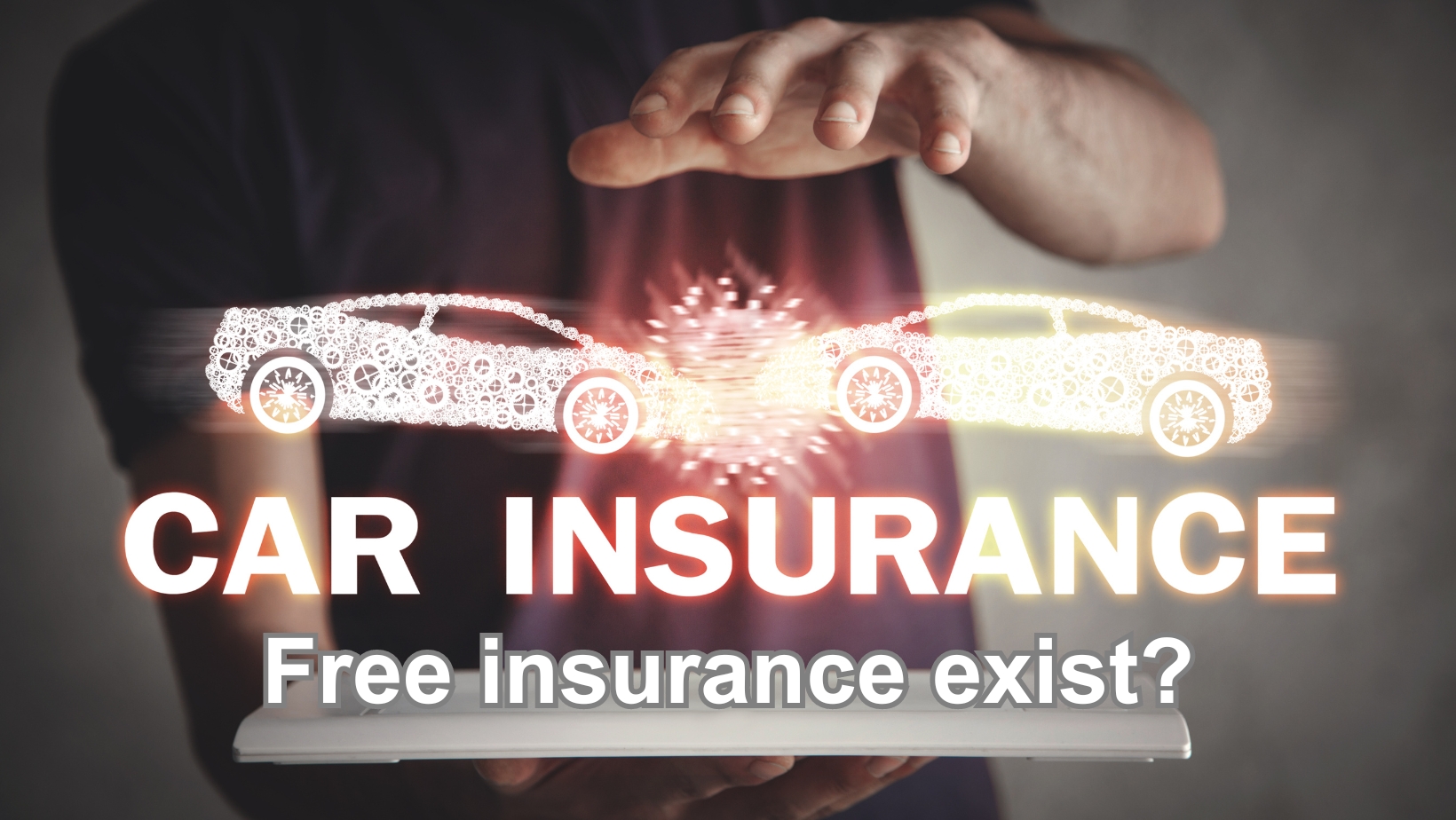“Cars with free insurance” sounds good, doesn’t it? Getting comprehensive auto coverage with no premiums or other deductibles is like something out of a fairy tale. Do you think cars with free insurance exist? Without a doubt, you can always opt for a cheaper insurance premium. But nothing in insurance is free. Keep reading to find out more.
Contents
- 1 Are there cars with free insurance?
- 2 Purchased cars, leased cars and free insurance
- 3 Rental cars and free insurance
- 4 Are there any car insurance assistance programs?
- 5 How to save on car insurance?
- 6 What is accident forgiveness insurance?
- 7 How does accident forgiveness work?
- 8 Accident paying
- 9 Accident forgiveness conditions
- 10 Insurance Companies That Offer Accident Forgiveness
- 11 Accident Forgiveness Options
- 12 In summary
Are there cars with free insurance?
Car insurance operates on a risk-sharing policy. The riskier the driver, the higher his insurance premiums. Is it really that simple? Let’s see. When you buy insurance for your car, it usually covers bodily injury and property damage in your policy. But some car manufacturers offer free insurance that may cover certain areas of your policy. Some all-inclusive car leases or assistance programs may be available from some dealers. But you should be able to find free insurance quotes or prices for insurance policies online. Conversely, cars with free insurance do not exist and you should be wary of such offers.
Insurance is a complex area and it is easier to commit fraud in this area. Several phishing activities and fraudulent schemes target victims by promising “cheap insurance” or “free insurance.” They claim to have lower prices than any other provider in the market. Generally, older people fall prey to such activities. It is also possible that the policy provided is fake with a fake contract. The National Association of Insurance Commissioners warns against agents who use high-pressure methods or quote rates 15 to 20 percent lower than their competitors. Also be wary if you can’t find any information about the company. Being careful and doing your research is the best choice you have here.

Purchased cars, leased cars and free insurance
Dealers often offer free bundled insurance policies with new or leased cars. Some car manufacturers offer insurance as part of their marketing strategy. For example, in 2005, GM Motors, in conjunction with MetLife, offered a year of free insurance to buyers of certain new models in certain states. Also, as part of its Care by Volvo plan, Volvo provides all-inclusive insurance on their rental cars with gap insurance in the event of the car being totaled.
Gap insurance covers the gap between the actual cost of your vehicle and the loan or lease you owe if your car is stolen or declared a total loss. For example, if you owe $30,000 on your loan and your car is only worth $25,000, gap insurance will cover the balance amount of $5000 after totaling.
Rental cars and free insurance
Some rental companies offer cars with liability coverage. This policy will help cover any bodily injury or property damage you cause to someone. However, if you end up in an accident, you also risk damaging the rented vehicle. The three common ways to manage rental car insurance :
- Take out damage insurance from the rental company.
- Use your car insurance money to help pay for any damages. Check with your insurance company first.
- Use the first or second damage coverage on your credit card.
Are there any car insurance assistance programs?
There are state programs to reduce the cost of insurance for those who meet the state’s minimum income requirement. However, these programs are limited to three states: California, New Jersey and Hawaii.
How to save on car insurance?
Car insurance can be expensive, especially if you are a high-risk driver. However, it is not easy for anyone to pay an annual premium upfront. You can trust the #1 automotive super app and leading fintech platform Way.com to help you find the best deals. Through Way.com’s partnership with various insurers, drivers can choose the best rates from more than 200 insurance companies and even get auto refinancing, saving them more than $100 per month.
To learn more about how Way can help you lower your insurance costs and simplify your car ownership journey, download the awesome Way auto app now! Reserve your spot today!
Here are some other ways to reduce your insurance costs:
- Ask your insurer to split your payment into monthly installments and check if additional fees apply.
- In some states, insurers must provide discounts to owners of cars with certain car security and anti-theft equipment.
- If you don’t drive often, a mileage-based car insurance plan can help you save a lot.
- Compare rates and coverage from multiple providers and get quotes from the right insurance companies.
- Improve variables that could lower your insurance costs, such as car use, driving and credit history.
The accident excuse is a feature of auto insurance that prevents auto insurance rates from increasing after an accident. You can add this feature to your insurance as an optional rider. You may also be entitled to free accident compensation after a few years without an accident.
What is accident forgiveness insurance?
If you cause an accident, Accident Forgiveness prevents your car insurance rates from increasing.
If a driver causes an accident, their auto insurance premiums can increase by 33% for three to five years until the accident is removed from their record. With Accident Forgiveness, drivers can prevent their insurance rates from increasing due to an accident.
Some companies offer accident forgiveness as part of your insurance, while others charge an additional fee on top of your premium. Most companies will want you to have a clean driving record dating back 3 to 5 years.
Keep in mind that not all states allow accident forgiveness, so if you want to purchase accident forgiveness, check what your state offers.
Insurance companies consider many things when determining your rates, such as your age, vehicle, location and driving experience. Drivers with a good driving record and experience can benefit from significant discounts and low annual rates. But if a driver causes an accident, they could lose their savings and have to pay more because it is considered risky.

How does accident forgiveness work?
You benefit from a 10% reduction on your car insurance because you have had no claims or because you drive carefully.
You would lose your safe driving discount if you had an accident. Additionally, if you had an accident claim on your driving record, your insurance company would increase your rates when your policy is renewed. The increase usually lasts between three and five years.
If you have accident forgiveness, your rate will not increase even if you cause an accident. Although you may still lose the case if you did not have an accident, your insurance company will not increase your rates for the recent accident.
Is accident forgiveness worth it?
Often, Accident Forgiveness only covers one accident per driver, not per insurance. Even if you change insurance companies, if your accident is “forgiven,” it will still appear on your driving record for up to five years.
Ultimately, your rate could go up and any benefits you used to get as a “good driver” could be taken away.
If you have never caused an accident and are a “good driver,” you might decide that the cost of accident forgiveness is not worth it. Even though it costs more, it’s a safety net that could save you money in the long run in the event of an accident.
Accident paying
If you are the cause of more than half of an accident, it is called a “payable accident”. This means that you and your insurance must pay for some or all of the losses.
A paid accident will remain on your record for three to five years. However, some insurance companies may reduce this surcharge as you keep your record clean.
When your insurance rate does not increase:
- If someone hits you from behind and you haven’t broken any driving laws.
- If you have been injured by an animal or something that fell on you.
Accident forgiveness conditions
Even if you have an accident forgiveness policy, any accidents you cause will still appear on your driving record. If you change car insurance companies a few years after the accident, your rates may increase due to the accident.
Often, accident forgiveness benefits only apply to a single accident for which you are at fault. After using your Accident Forgiveness, a second accident could increase your rates.
After the accident, you may be able to benefit from accident forgiveness again after a few years of safe driving, but some companies only allow you to use accident forgiveness once per policy.
Only some insurance companies offer accident forgiveness, which may only be available in certain states.
Insurance Companies That Offer Accident Forgiveness
It is important to remember that each insurance company’s accident forgiveness policy may have different features and requirements. Here are some companies that will cover the costs of an accident:
Allstate: Offers accident forgiveness as a coverage choice. Eligibility changes, but you must have avoided an accident in the last three to five years.
American Family: You can get this if you haven’t filed a claim in five years and you don’t have a serious offense on your criminal record.
Auto Owners: You can purchase this benefit from Auto Owners if none of the drivers on your insurance have had any fault claims or major violations in the last 36 months.
Erie: After you have been an Erie user for at least three years, they will release you from your first accident.
Farmers: Farmers will leave you alone for an accident you caused every three years without an accident.
Mutual Freedom: Over the past five years, drivers must not have had any accidents or fines. Before a driver under 25 can qualify, they must have a clean driving record for at least five years.
Nationwide: Accident forgiveness is an option that can be added to an auto insurance policy from Nationwide. Nationwide’s accident forgiveness policy is similar to many others. It does not charge you extra for your first accident for which you are at fault or for a small infraction that would normally result in charges.
Progressive: Progressive customers can receive coverage for small and large accidents through the Progressive Loyalty Rewards program. Your rate will not increase if you file a claim for less than $500 with small accident coverage.
The Hartford: If no driver on your insurance has had an accident or committed a moving violation in the last five years, The Hartford will not bill you for accidents.
Travelers: Travelers have a “Responsible Driver Plan” plan which covers accidents and forgives small infractions. A small infraction and an accident are forgiven every three years under this plan.
USAA: If no member of your family has caused an accident in the last five years, USAA will offer you this optional coverage for free.
Accident Forgiveness Options
In addition to letting accident-free drivers off the hook, insurance companies offer several other benefits to safe drivers.
Accident-Free Rate: Some insurance companies, like State Farm, offer discounts if you haven’t had an accident in three years. If you remain a safe driver, this rate may increase over time.
Disappearing deductibles: If you don’t cause an accident for a certain period of time, your insurance company may reduce your deductible by that amount.
Good Driving Discount: Most of the time, if you don’t get tickets, get into accidents, or don’t file a claim, your quote or insurance will go down. This could be a discount on your next payment.
In summary
Although insurance requirements vary by state, car insurance is mandatory for you to legally drive on the streets. You can reduce your insurance costs by comparing available market rates and following some of the requirements determined by the state. But be wary of free insurance offers and heavily discounted offers. Always check and make sure your policy is credible before signing up.






